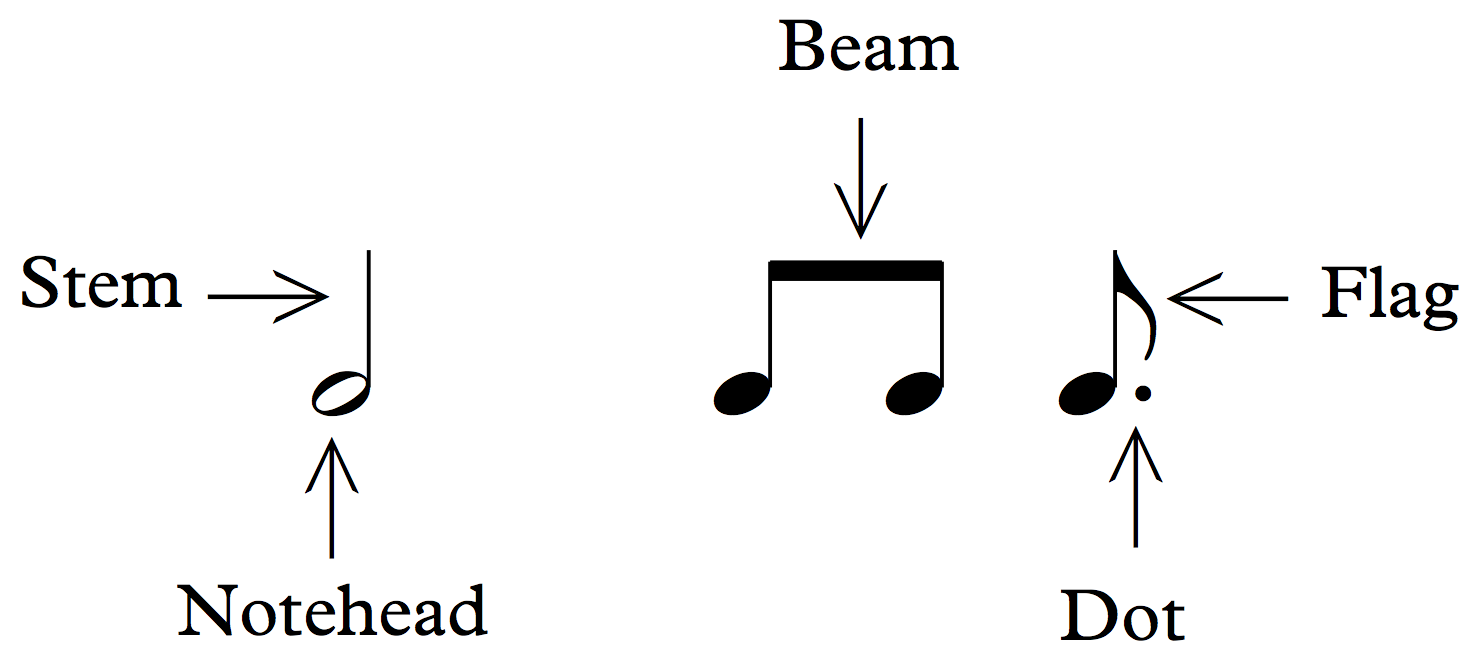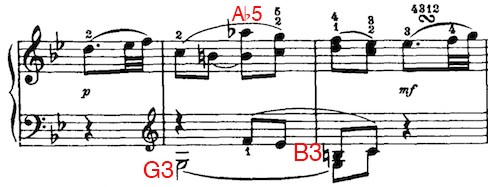Integrated Music Theory 2019-20
Discussion 1a - Pitches and Clefs
Class Discussion
Clef reading tips/tricks
- FACE: thinking in thirds; the spaces on the staff are organized in thirds. Applied to an unfamiliar clef, you can find notes quickly by knowing one note and thinking in/around thirds to get to the mystery note. However, this generally doesn’t go quickly and ledger lines can be an issue
- Transposition: If you know the concert pitch for whatever note you play, you can instantly “read” other clefs (Ex.: playing trumpet = “playing in tenor clef” despite reading treble clef)
- Creating extra steps almost always = mistakes–try and come up with a method that adds very little to the reading process
- Whatever you’re best at + whatever clef you’re most familiar with = success! For example, if you’re used to reading treble clef, use that as a baseline comparison to the other clefs.
Additional tips
- Bass clef = F clef and “points” to F, so you will always know where F is in bass clef. This is the same for C in alto and tenor clefs, and G in treble clef.
Further Reading
======
From Open Music Theory
Notes
When written on a staff, a note indicates a pitch and rhythmic value. The notation consists of a notehead (either empty or filled in), and optionally can include a stem, beam, dot, or flag.

Staff
Notes can’t convey their pitch information without being placed on a staff. A staff consists of five horizontal lines, evenly spaced. The plural of staff is staves.
Clefs
Notes still can’t convey their pitch information if the staff doesn’t include a clef. A clef indicates which pitches are assigned to the lines and spaces on a staff. The two most commonly used clefs are the treble and bass clef; others that you’ll see relatively frequently are alto and tenor clef.
Grand staff
The grand staff consists of two staves, one that uses a treble clef, and one that uses a bass clef. The staves are connected by a curly brace. Grand staves are used frequently for notating piano music and other polyphonic instruments.
Ledger lines
When the music’s range exceeds what can be written on the staff, extra lines are drawn so that we can still clearly read the pitch. These extra lines are called ledger lines. In the example below, From Haydn’s Piano Sonata in G (Hob. XVI: 39), A-flat5 occurs just above the treble staff in the right hand, and G3 and B3 occur just below the treble staff in the left hand.

Accidentals
Accidentals are used to indicate when a pitch has been raised or lowered. They are written to the left of the pitch.
- When you lower one of the white notes of the piano by a semitone, you add a flat.
- When you raise one of the white notes of the piano by a semitone, you add a sharp.
- When you raise a note that is already flat by a semitone, you add a natural.
- When you lower a note that is already flat by a semitone, you add a double flat.
- When you raise a note that is already sharp by a semitone, you add a double sharp.
The example below shows the symbols for flat, natural, sharp, double sharp, and double flat, respectively.
